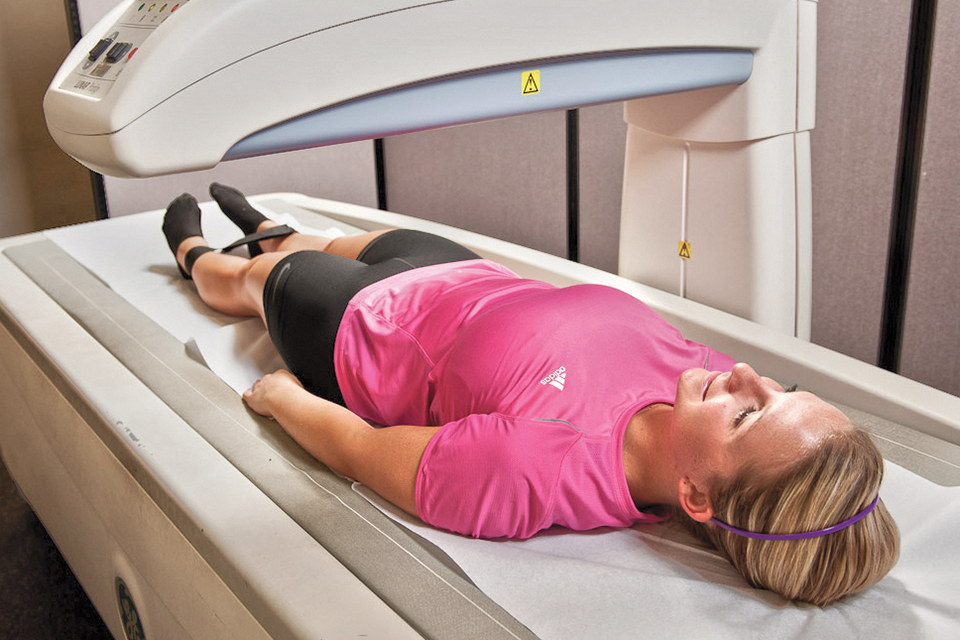Know Your Fitness Numbers

The Fitness Institute of Texas (FIT) opened its doors in 2001 with the intent to provide the Austin community the tools necessary to live a more healthy lifestyle. In the 12 years since, FIT has developed a variety of fitness assessments and programs offered to Austinites, University of Texas students and athletes alike.
FIT has six different health and fitness assessments to choose from, depending on one’s personal needs or goals. Each assessment comes with a full consultation to discuss results, an extensive report detailing the assessment’s conclusions, and recommendations to improve health and wellness. In addition to fitness and health testing, FIT also offers nutrition and exercise programs for those who would like professional guidance on their journeys to good health.
Body Comp FIT
FIT’s most popular assessment, the Body Comp FIT measures body composition with the help of a DEXA (dual energy X-ray absorptiometry) scan, which calculates total body fat mass, bone mass, and lean mass.
“It really tells you more about what you’re made of,” FIT operations director Julie Drake said. “The scale doesn’t tell you everything.”
The DEXA not only reveals overall body fat percentage but also provides regional data for arms, legs, trunk, abs, and hips. This data shows exactly how body fat is distributed throughout the body.
“Having too high a fat [content] for your body weight puts you at risk for disease over time, so knowing where you are can help you goal set,“ Drake added.
The regional data is also helpful in gauging fitness progress, particularly if undergoing a second scan after changing exercise or fitness routines.
Aerobic FIT
Aerobic FIT is another popular assessment that measures VO2 max during a test on the treadmill, stationary bike or rowing machine ("VO2 max" is the maximum amount of oxygen the body can consume). Drake described it as a “picture of your engine” and of how well the heart and lungs work during peak exercise.
“A really fit person, they’re pretty good at it; their heart and lungs can deliver oxygenated blood to those working muscles very well,” Drake said. “A less fit person, not so good at that; their engine is not as good, nor is their metabolic process of delivering oxygen to the working muscles.”
Aerobic FIT also determines maximal heart rate and training heart rate zones. For an additional fee, endurance competitors can get a more thorough version of the Aerobic FIT assessment that utilizes lactate threshold testing. This test can help determine peak running speed and heart rate for runners, as well as maximal VO2 and power output for cyclists.
Calorie FIT
Calorie FIT measures the resting caloric expenditure (RMR) and estimates the physical activity caloric expenditure (the number of calories expended above rest) to determine the total number of calories burned per day.
“Once you learn your number of calories you burn at rest, we are able to properly prescribe the amount you should be eating based on your activity level,” Drake said.
Calorie FIT is most popular test among people looking to lose weight since it helps determine the appropriate energy expenditure and caloric intake required for weight loss.
Exercise Rx
Exercise Rx offers FIT customers a customized exercise “prescription.” After a 60-minute one-on-one meeting, a trained fitness professional designs a program tailored to one’s individual goals and lifestyle. Exercise Rx differs from other programs because it not only focuses on the fitness routine but also on the education and behavior necessary to incorporate and maintain healthy habits. A large focus of the program is educating participants to make permanent lifestyle changes and overcome barriers to a life of health and wellness.
Muscle FIT
The Muscle FIT assessment analyzes both muscle performance and movement. The muscle performance analysis uses strength, endurance, and flexibility tests to evaluate the muscular system. This analysis helps determine whether your strength is lower or higher than that of others in your age range. The movement analysis helps determine tight or weak muscles that can impede performance. Once muscle weaknesses are identified, recommendations can be made to not only help prevent injury but also move better.
Nutrition FIT
Nutrition FIT analyzes diet and provides a customized nutrition program. A consultation with a registered and licensed dietitian includes detailed evaluations of current caloric intake and lifestyle. A meal plan can then be developed according to one’s specific needs.
Beyond these assessments, FIT also offers three main fitness and nutrition programs: GET FIT, FIT to the Core, and Weight Loss Express.
GET FIT
GET FIT incorporates both exercise and weight loss within the program’s 12-week span. Each week on the program consists of three, one-hour workouts and a one-hour seminar on nutrition, behavior change, and exercise education. The program also includes a before and after DEXA body composition test so that changes in fat, muscle, and bone can be accurately tracked.
FIT to the Core
The purpose of the FIT to the Core program is to educate and train individuals on preventative measures and exercises that can help strengthen and stabilize the core as well as reduce back pain. The program consists of four 45-minute classes and is ideal for people who spend large parts of their days sitting.
Weight Loss Express
Weight Loss Express is a 12-week program led by a registered FIT dietitian that focuses on educating participants on nutrition, exercise, and the behavioral aspects that come along with successful weight loss.
Knowing where you stand on the health and fitness spectrum is an excellent starting point for making lifestyle changes. Whether your goal is to lose weight, gain muscle mass, or simply become healthier, knowing your numbers is a crucial component to success.






